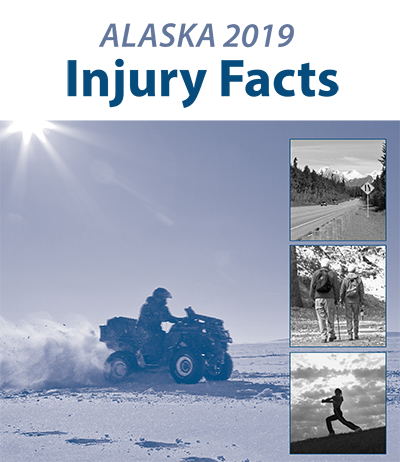CDPHP Announcement - 2019 Alaska Injury Facts Report - Posted
Alaska Department of Health sent this bulletin at 06/26/2019 10:00 AM AKDTAlaska 2019 Injury Facts Report:
Injury & Deaths Related to Falls among Older Adults
and Transportation Incidents among All Alaska Residents

Since 2014, Alaska has ranked within the top 10 states in the country for deaths caused by unintentional injury.1 In 2014 and 2015, Alaska was ranked 8th among states for unintentional injury, and in 2016 Alaska climbed to 7th place. Serious injury and death are considered preventable in cases where risks can be mitigated through the use of safety devices (e.g., seat belts), education, and policies (e.g., laws requiring seat belts and prohibiting distracted driving). Serious unintentional injury and death are also often associated with measurable factors like demographic and environmental characteristics, which can be used to develop and tailor effective interventions.2
A public health approach to injury prevention seeks to improve the health, safety, and wellbeing of a population by addressing individual, social, environmental, and societal determinants of health. This process involves identifying and reducing risk factors while also identifying and leveraging protective factors to advance overall health.3 The Alaska Statewide Violence and Injury Prevention Partnership recently developed the Alaska Statewide Violence and Injury Prevention Plan4 wherein they identified shared risk and protective factors for priority areas of injury concern. Building off this work and in an effort to support injury prevention efforts statewide, the current report is a compilation of information related to two of the leading causes of injury and death in Alaska: falls among older Alaska adults and transportation-related incidents among all Alaska residents.
This report presents data on the prevalence of injury and death caused by falls and transportation-related incidents as well as patterns observed by select subgroups (i.e., gender, age, race, and region). Data also include information on behavior, health indicators, and social characteristics related to these two injury categories. Many of the risk and protective factors for falls and transportation-related injury identified in the Alaska Statewide Violence and Injury Prevention Plan are examined here.
A number of data sources on falls among older Alaska adults and transportation-related incidents among all Alaska residents are included in this report but there are many others worth exploring. Several organizations within the state regularly collect and disseminate information pertinent to transportation-related injury5 and death.6 Those interested in more information are encouraged to access the Alaska Injury Prevention webpage (http://dhss.alaska.gov/dph/Chronic/Pages/InjuryPrevention/default.aspx).
_______________________________________________
- US Centers for Disease Control and Prevention (CDC) National Center for Health Statistics. Accident Mortality by State, 2014, 2015, and 2016. https://www.cdc.gov/nchs/pressroom/states/alaska/alaska.htm. Updated April 13, 2018. Retrieved June 28, 2018.
-
Alaska Statewide Violence and Injury Prevention Partnership; Alaska Statewide Violence and Injury Prevention Plan, 2018-2022. http://dhss.alaska.gov/dph/Chronic/Documents/InjuryPrevention/documents/2018-
2022_AKStatewide_InjuryAndViolencePreventionPlan.pdf. Retrieved February 20, 2019. - Oregon Public Health Division, Oregon Health Authority, Oregon Injury Community Planning Group; Oregon Injury and Violence Prevention Plan, 2016-2020.
- http://dhss.alaska.gov/dph/Chronic/Documents/InjuryPrevention/documents/2018-2022_AKStatewide_InjuryAndViolencePreventionPlan.pdf
-
For example, the Alaska Injury Prevention Center’s annual survey of Alaska drivers:
http://alaskainjurypreventioncenter.org/wp-content/uploads/2017/10/AIPC-2017-Transportation-Survey-FinalReport.pdf and observational study of seat belt use: http://alaskainjurypreventioncenter.org/wpcontent/uploads/2017/10/2017-AK-OPUS-Report-1.pdf -
For example, the National Highway Traffic Safety Administration’s Fatality Analysis Reporting System (FARS):
http://www.dot.state.ak.us/highwaysafety/fars.shtml - Complete descriptions of each data source used in this report appear in Section V: Data Sources.
Download the full report from the Alaska Injury Prevention Program web page.
To learn more about Injury Prevention in Alaska please visit: http://dhss.alaska.gov/dph/Chronic/Pages/InjuryPrevention/default.aspx
You are subscribed to Chronic Disease Prevention and Health Promotion Announcements for Alaska DHSS.
Please go to http://dhss.alaska.gov/dph/Chronic/Pages/Cancer/comprehensive.aspx to learn more about our section and our mission: To identify and advance the conditions that lead to safe and healthy lives for Alaskans.
